Term archive
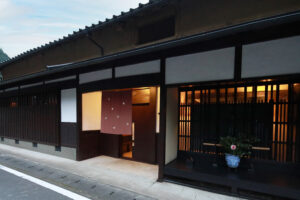
投稿タイプ:stay
Abura-ya
The beautiful countryside of Ohara is located deep in the mountains of Kyoto Tamba. Close to the venerated Ohara-jinja Shrine, Abura-ya is a 180 year-old merchant shop that has long been known locally by this name ("abura-ya" means "oil shop"). Here in the countryside, time flows along gently, slowly, and beautifully. We are so pleased to welcome you here. Visitors are welcomed to come and enjoy Abura-ya by reservation, with one group at a time.
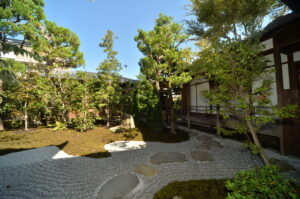
投稿タイプ:stay
Hanare Ninoumi
Hanare Ninoumi is made up of three buildings, "Okyo," "Baigan," and "Ryokai," renovated from a 100 year-old building. Even as the beauty and elegance of the original has been preserved, the building's plumbing has been completely updated to accomodate a comfortable modern lifestyle. Take your leisure as you enjoy taking in the traditions and history of Kameoka City as part of a modern-day lifestyle.
*Because the facility is exclusively used for overnight guests, Hanare Ninoumi is closed to visitors seeking tours. We ask for your understanding.
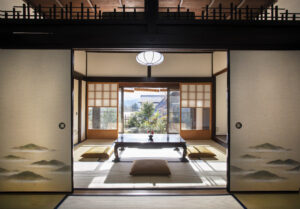
投稿タイプ:stay
Bishamon House
Bishamon House is located at the foot of the eastern mountain range in the ancient village of Bishamon (named for a Buddhist guardian deity) in Kameoka City.
Surrounded by spectacular views of the Kameoka Valley, the house is just a short stroll from the start of the beautiful Seven Lucky Temple Path, and only 10 minutes' walk from Cherry Blossom Park, famous for its beautiful landscape of more than 1,000 cherry trees.
Older than Kyoto, Kameoka has many cultural heritage sites, including temples and shrines, which are interesting for their beauty, but also that they remain a vibrant aspect of local lives and traditions. Kameoka is just 20 minutes by train from JR Kyoto Station, and the route travels through a lush green valley with vistas of rice paddies and traditional villages nestled at the foot of the mountain range.
Bishamon House's Tsuzumi and Christian welcome you join them in their beautifully restored 150 year-old traditional Japanese home, located in the picturesque village of Kameoka, Kyoto. Tsuzumi grew up in the area and knows its many charms as only a local can. Christian is Italian and a long-time student of the Japanese martial art of Kendo. Both are fluent in English, Italian, and of course, Japanese.
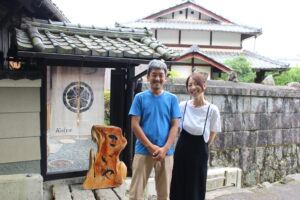
投稿タイプ:stay
Koiya Farmhouse Inn
Koiya Farmhouse Inn is located next to Iwaki-jinja Shrine in Chiyokawa-cho, Kameoka City, Kyoto Prefecture.
Built in 1183, Iwaki-jinja Shrine enshrines the Shinto god of water, said to have been born from fog, Ichikishimahime no Mikoto, and every September, the "yutate" (hot water) purification rituals are held there.
As the name implies, Chiyokawa (lit. "thousand generation river") has long been protected by Shinto gods by small rivers and waterways, and previous generations prospered farming carp. Carp farming has currently ceased to focus on the production of high-quality and delicious agricultural products, but even now some people call the area "koiya-san" (carp farmer), and it from this that the inn gets its name.
Guests at Koiya Farmhouse Inn are limited to one group per day, so that guests may fully enjoy their experience.
The warehouse and detached house have been rennovated so that guests can take their leisure, and enjoy the vegetables we make in a relaxed manner.
Come and enjoy Kameoka's unique country lifestyle, complete with meals made with fresh seasonal vegetables, talking walks, and sightseeing.
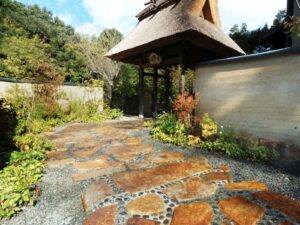
投稿タイプ:stay
Sumiya Kiho-an
Kameoka City's Yunohana Onsen region is often referred to as "Kyo no Okuzashiki," meaning a getaway location close to the city of Kyoto. Legend has it that long ago in the Sengoku period (the "period of warring states," from 1467-1615), samurai warriors would come to these hot springs to heal their wounds. Nestled in the mountains, these days Sumiya Kiho-an has more of a nature resort-like atmosphere. The thatched roof gate and earthen walls at the entryway, the takekomai earthen walls, and the traditional Japanese oven made from eco-friendly shikkui plaster are numerous examples of traditional Japanese architecture and craftsmanship you'll find here. Sumiya Kiho-an’s exclusive atmosphere extends to the guest rooms, library, café, and tea room. After relaxing at the onsen overlooking the mountains, or with Ayurvedic spa treatments, you can enjoy a kaiseki meal (formally arranged course) made using Kyoto vegetables, local Tamba beef and other local seasonal produce. Sumiya Kiho-an has an atmosphere reminiscent of the idyllic landscape of pre-modern Japan, without feeling stuffy, and the modern touches make it an exquisite but lesser-known hideaway.
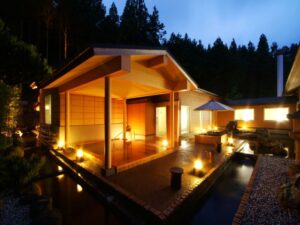
投稿タイプ:stay
Syoenso Hozugawatei
Syoenso Hozugawatei is a Japanese-style ryokan inn in Kameoka's Yunohana Onsen, often referred to as "Kyo no Okuzashiki," meaning a getaway location close to the city of Kyoto. Upon entering the ryokan, the luxurious high ceilings of the open air lobby make an impressive sight. The harmony of the beautiful flowers, translucent paper shoji windows, and the garden corridor made of trees creates a relaxing atmosphere. In Syoenso Hozugawatei ryokan, there are 6 different types of guest rooms, and a natural hot spring open-air bath in which to relax. After your bath, you can enjoy a genuine Kyoto kaiseki (formally arranged course) meal including bamboo shoots, conger/pike eel, mastutake mushroom, and boar hot pot. Nearby, you can also enjoy attractions like the Sagano Romantic Train and the Hozu-gawa River boat ride, making Syoenso Hozugawatei the perfect location to conveniently enjoy the surroundings in Kyoto.
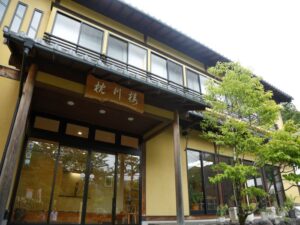
投稿タイプ:stay
Ryokan Chinsenro
Ryokan Chinsenro is about 2 kilometers away from the mouth of the Miyama-gawa River in Miyama's famous thatched village (Kayabuki no Sato). The ryokan sees cool weather in the summertime and is snow-covered in the wintertime (though to a lesser extent these days). Meals at Ryokan Chinsenro combine fresh mountain produce with culinary expertise, allowing for the subtle flavours of the produce to shine through. The specialty in summer is a formally arranged kaiseki course meal showcasing wild-caught sweetfish. Autumn showcases the matsutake mushroom, and in winter wild boar hot pot and barbeque made using three different parts of the wild boar are delicacies. All the rooms at Ryokan Chisenro look out onto the Miyama-gawa River, where the tranquil sounds of water in the stream help guests to unwind and enjoy the view. The classically idyllic scenery of pre-modern Japan is still vivid in the mountain village of Miyama. Please come and enjoy the delicacies nutured by Miyama's beautiful water, air, and land, equally blessed with the free and easy atmosphere of the town.
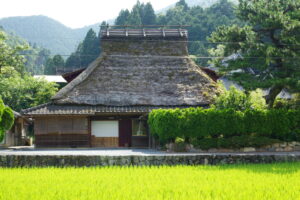
投稿タイプ:stay
Miyama Futon & Breakfast Thatched Cottages
Miyama Futon& Breakfast is a traditional thatched cottage fully rennovated and complete with all the modern conveniences. The house is 150 years old and registered as a site of cultural heritage. It is a beautiful example of traditional thatched architecture. Come discover the real Japan in a comfortable, traditional thatched cottage only 90 minutes from Kyoto City, in the beautiful Miyama valley.
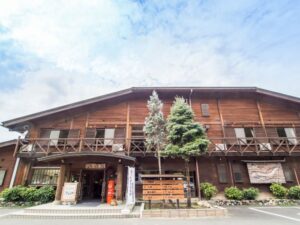
投稿タイプ:stay
Miyama Nature & Culture Village Kajikaso Inn – Main
The ancient village of Miyama in northern Kyoto is located in a woodland where humans coexist with nature against the idyllic Japanese-landscape backdrop. In Miyama, you get a sense of nostalgia that may make you feel as if you've been there before, even on your first visit. Located next to the clear water of the Yura-gawa River, Kajikasou is a log-cabin accommodation with simple Japanese-style guest rooms and a large indoor bath and open-air bath. Here you can escape from the hustle and bustle of the city and relax. Kajikasou prides itself on its cuisine showcasing locally grown produce, including Miyama wild deer (available with the wild game course) and Miyama chicken (kyoji-dori, available with the sukiyaki course). In addition, there are seasonal kaiseki (formally arranged course) meal options, which include wild vegetables from the mountain in spring, sweetfish caught in the clear Yura-gawa River in summer, or boar meat hot pot in the winter. About 2 kilometers away and perfect for taking a walk or cycle to visit, you'll find the popular thatched roof village, Kayabuki no Sato. Miyama is especially beautiful in the winter, and you can enjoy the winter scenery with the Miyama Snow Shoe Hike through the snow-covered mountains. In other parts of the year there is also the very popular Ashiu Forest Guided Nature Trek that takes you through the secluded, primeval Ashiu Forest, and close to the head of the clear Yura-gawa River—an experience so popular that people often come back for it.
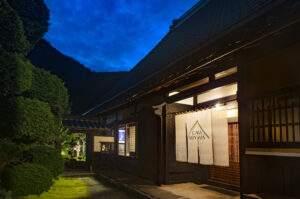
投稿タイプ:stay
Casa Miyama
Casa Miyama is a 110 year-old thatched roof country home in a small hamlet in Miyama, Kyoto, recreated by a pair of photographers. Currently, the thatched roof is covered with tiling, but if you climb up to the attic, you can still see the building's wonderful thatching. While preserving the old home's original structure, the traditional fittings within have been restored by hand and reused. The veranda overlooking the garden, and Japanese-style rooms have also been preserved, but update to fit modern lifestyles. Visitors are invited to enjoy a Japanese interior that harmonizes perfectly with the accents of Spanish and Scandinavian furniture within.
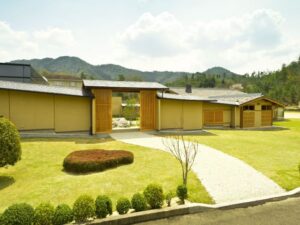
投稿タイプ:stay
Keburikawa
Keburikawa is located deep within the Yunohana Onsen region, which is often referred to as "Kyo no Okuzashiki," meaning a getaway location close to the city of Kyoto. Legend has it that long ago in the Sengoku period (the "period of warring states," from 1467-1615), samurai warriors would come to these hot springs to heal their wounds.
Today, you can visit Kyoto-Keburikawa for day trips, and experience the traditional tatami flooring, natural hot springs, and open-air baths. For dining options, there are two restaurants: Ishigama Dining Hanari, where you can enjoy an ishigama course of stone oven cooking, or Satoyama Dining Daichi, with its formal kaiseki course meal that uses vegatables harvested fresh from the inn's own garden, and also offers a generous buffet lunch option. Inside the grounds of Kyoto-Keburikawa there is also a woodland garden with a foot bath, where you can relish the feeling of a slow-paced lifestyle. Kyoto-Keburikawa is also the perfect location to enjoy the nearby Sagano Romantic train and Hozugawa boat ride.
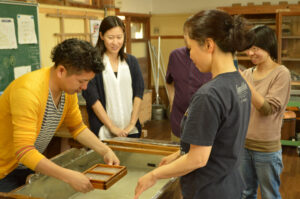
投稿タイプ:activities
Japanese Washi Paper Label-Making
Design your own original sake label and stick it on a bottle of "Ayakomachi" from Wakamiya Sake Brewery, the only brewery in Ayabe, with a history of 100 years. The finished sake bottle with its label is perfect as a gift or for yourself! You can also visit the production site of Kurotani washi (traditional Japanese paper) and Wakamiya Sake Brewery.
